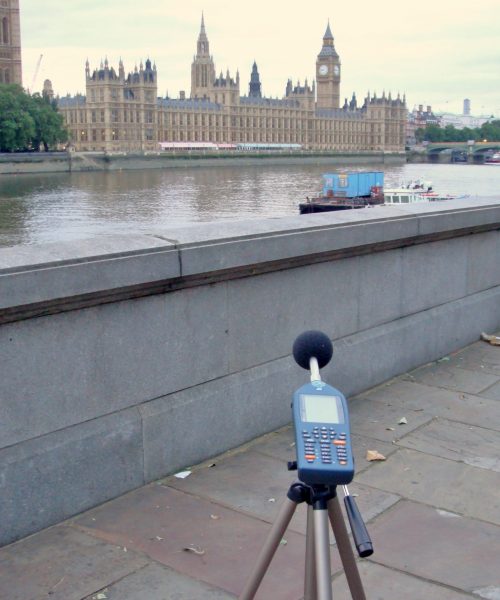In large cities, there is far more noise pollution than ever before; this comes from a huge range of noise sources such as traffic, alarms and music/sport venues. As cities populations get larger, people start to inhabit an increasingly compacted space the work of acoustic consultants is becoming ever more important to help reduce excess noise levels. This can be done through a variety of means and methods, one of the most important methods in the context of busy urban environments in the noise impact assessment.
Noise Survey Equipment

The main purpose of a BS8233 noise assessment is to measure and predict the impact that a development will have on the surrounding environment, residents and whatever noise sensitive receptors happen to be within the vicinity of the development.
The local authority may require a noise impact assessment for a number of reasons, this can include the opening of an entertainment premises in a sensitive area, the installation of new mechanical plant such as a new air-conditioning unit or a change in opening hours of a premises that already has permission to operate from the local council, such as a bar/nightclub wanting to extend its licence from 23.00 to 02.00.
A noise impact assessment may be required at the application stage or once planning permission has been granted. A noise survey and report are required if:
- The proposed development with commercial areas that may create noise which may affect nearby noise sensitive properties. For example, a new commercial activity near existing residential properties.
- The proposed development location will be sensitive to noise and is likely to be affected by existing noise sources i.e. busy roads, railway, airports or commercial activity.
The noise impact assessment is to demonstrate that:
- The source of noise is evaluated and quantified
- Nearby noise sensitive receptors identified
- Noise receptors have been determined with reference to noise standards
- The BS8233 noise assessment may also set out control measures where it is necessary to reduce noise to acceptable levels. For example, the installation of different glazing e.g. from double to triple glazed panels or acoustic trickle vents are installed so that internal noise standards are met.
If noise levels are shown as NEC category B and above, the local authority will look for noise reduction measures that will achieve the “good” internal noise level criteria in bedrooms and living rooms set out in BS8233:2014. Where the noise levels are shown as NEC category D, the local authority usually recommends that planning consent be refused.
